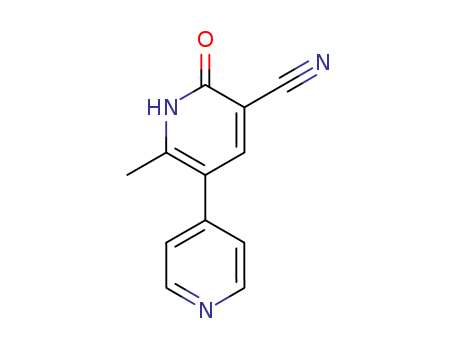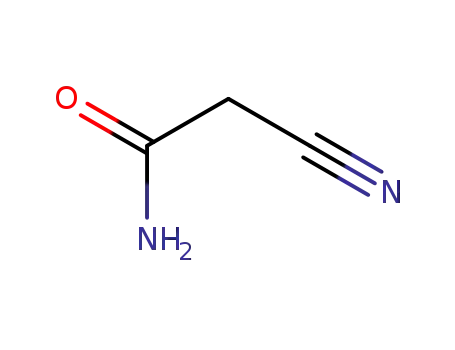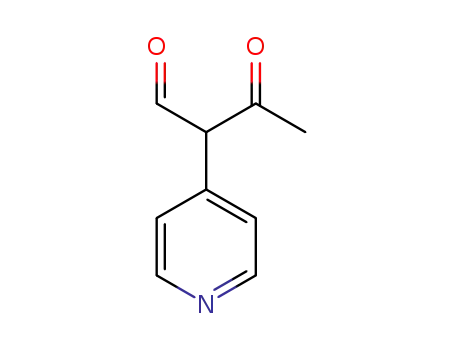Your Location:Home >Products >API >78415-72-2


Product Details
|
Positive Inotropic drugs |
Milrinone, also known as bipyridine ketone, methyl cyanide topiramate ketone, is a drug for the treatment of heart failure ,it is a homolog of amrinone, having positive inotropic and vasodilatory effects, its mechanism of action is the same as ammonia milrinone , but the strength of its effect is 10 to 30 times of amrinone,without side effects of reducing platelets,it is well tolerated. Oral or intravenous way has a good effect, it can increase cardiac output and cardiac index, reduce left ventricular end diastolic pressure, pulmonary wedge pressure and right atrial pressure, it has no significant effect on blood pressure and heart rate,it takes effect within 0.5 hours after oral administration,and achieves to maximum effect after 1 to 3 hours , the half-life is 2 hours, the effect can be maintained for 4-6 hours, it is mainly metabolically inactivated in the liver , 80% of it is excreted unchanged in the urine. It is clinically used in the treatment of various acute and chronic heart failure,it is effective in digitalis and diuretics invalid refractory heart failure . This product is the same as amrinone, significant short-term effect, long-term efficacy remains to be further confirmed, but the side effects are little. Compared with amrinone, milrinone has the following characteristics: 1, small doses mainly have positive inotropic effect, vasodilator effect is gradually enhanced while increasing the dose ,its positive inotropic effect accounts for 1/3 of the total effect in the treatment of heart failure, vasodilation effect accounts for2/3 of the total effect. 2,not significantly increasing myocardial oxygen consumption. 3, to improve peripheral circulatory disorders in heart failure, to increase exercise capacity of patients with heart failure and improve their quality of life. 4, for cardiac β receptors in a low-key and reduced β agonistssusceptibility heart failure patients, the drug is still valid. 5, the positive inotropic effect does not produce tachyphylaxis phenomenon. 6, no significant effect on blood pressure and heart rate. The above information is edited by the lookchem of Tian Ye. |
|
Mechanism |
Milrinone is non-digitalis, non-catecholamines cardiac drug , it is representative drug of phosphodiesterase inhibitor,selectively inhibiting phosphodiesterase in myocardial cells, increasing intracellular cyclic adenosine monophosphate, alter intracellular calcium transport, thereby increasing myocardial contractility and expanding peripheral vessel . An increase in myocardial oxygen consumption caused by Milrinone increasing myocardial contractility may be offset by its vasodilator effect. Milrinone is an ideal drug for the treatment of coronary artery stenosis, decompensated heart failure led by myocardial ischemia . Because milrinone hasβ receptor down features, it is an ideal drug for the treatment of decompensated heart failure in patients applying β-blocker . Because milrinone has effect on expanding small arteries and veins, it is more beneficial than dobutamine for the traetment of decompensated heart failure with severe pulmonary hypertension . |
|
Dosage |
First dose is slow intravenous injection (50 μg/kg, intravenous injection after dilution, time is not less than 10 min), then with 0.375~0.750 μg/(kg · min), continuous intravenous drip. The maximum daily dose is 1.13 mg/kg. Patients with renal insufficiency reduce the use according to creatinine clearance level, for example, creatinine clearance rate is 20 ml/(min · 1.73 m2), intravenously at a dose of 0.28 μg/(kg · min). 80% of Milrinone is excreted from the kidneys, in general,for renal insufficiency patients, the dose should be halved. |
|
Drug Interactions |
Patients already receiving angiotensin-converting enzyme inhibitor therapy using milrinone can further improve hemodynamics, but also increase the side effects caused by the blood vessels dilation. Milrinone combinated with mid-dose dobutamine, can enhance the positive inotropic effect, further reducing left ventricular end-diastolic pressure. When there is low blood pressure, milrinone can theoretically combine a larger dose dopamine. |
|
Precautions |
1, showing ventricular arrhythmia, supraventricular arrhythmias; few are headache, ventricular arrhythmias, weakness, low platelet count, etc; overdose may lead to low blood pressure, tachycardia; occasionally bronchospasm, fever . 2, acute myocardial infarction patients are disabled. 3, patients with hypotension, tachycardia, renal insufficiency, atrial fibrillation or flutter, electrolyte imbalance, drug-induced arrhythmias, kidney disease, severe aortic or pulmonary valve disease , pregnant women, lactating women should use with caution. 4,the elimination half-life of this product is significantly prolonged in patients with renal insufficiency , it should be reduced in patients with renal insufficiency, and the infusion rate should be slow . Elderly patients do not need to adjust the dose. |
|
Chemical Properties |
Crystallization From Dimethyl formamide monohydrate or ethanol, the melting point> 300 ℃. |
|
Uses |
New non-glycosides non-catecholamines cardiac drug , its function is similar to amrinone ,positive inotropic effect is strong and about 20 to 50 times of amrinone, and it has significant effect on expanding smooth muscle,it can reduce the load on the heart, it can also improve kidney and muscle blood supply. Oral and intravenous are valid, no serious adverse reactions. It is used For severe heart failure such as chronic heart failure and congestive heart failure. |
|
production method |
Method 1: 4-methylpyridine is dissolved in anhydrous diethyl ether, under protection of nitrogen, a solution of phenyl lithium in diethyl ether is added dropwise with stirring at room temperature, the reaction is continued. Nitrogen is stopped, cool to 0 ℃, ethyl acetate is added dropwise at below 10 ℃. With concentrated hydrochloric acid to Ph = 1~2, the aqueous layer is separated, basify with saturated sodium carbonate to Ph = 9, precipitate oil , extract several times with chloroform, dry, chloroform is distilled off, vacuum distillation, collecting 130-132 ℃/1.47kPa of fractions, namely, 1-(4-pyridyl) acetone. 1-(4-pyridyl) acetone, acetonitrile, and N, N-dimethylformamide dimethyl acetal are refluxed together. The solvent is distilled off under reduced pressure, the residue is dissolved in an appropriate amount of chloroform and an alumina column (Soxhlet)is heated at reflux for extraction, concentrate extract, with carbon tetrachloride-cyclohexane (4: 1) recrystallize to give 1-(4-pyridyl)-2-(dimethylamino) ethenyl methyl ketone. 1-(4-pyridyl)-2-(dimethylamino) ethenyl methyl ketone, cyano acetamide, sodium methoxide and dimethyl formamide are heated under reflux, the solvent is distilled off under reduced pressure, the residue is added acetonitrile, warm to dissolve , cool to 10 ℃; the precipitated solid is filtered, dissolve with amount of water, decolorize with charcoal, and acidify with hydrochloric acid 6mol/L to Ph = 6.5~7, the precipitated solid is recrystallized from dimethylformamide to give pale yellow granular crystals, which are milrinone, mp> 300 ℃. Method 2: use 4-pyridyl acetone as a raw material, after condensation with triethyl orthoformate, it reacts with 2-cyanoacetamide, to obtain milrinone. Method 3: pyridyl acetone reacts with 2,2-cyano-vinyl ethyl ether reaction to generate milrinone. |
|
Description |
Milrinone, an inhibitor of phosphodiesterase selective for fraction III PDE, exerts a positive inotropic effect on the heart as well as a peripheral vasodilatory effect. Milrinone given intravenously produces significant improvements on cardiac output, pulmonary capillary wedge pressure and vascular resistance without significant effects on the heart rate. |
|
Originator |
Eastman Kodak (Sterling) (USA) |
|
Brand name |
Primacor (Sterling Winthrop);Corotrope. |
|
General Description |
Milrinone, 1,6-dihydro-2-methyl-6-oxo-3,4'-bipyridine-5-carbonitrile (Primacor), is another dipyridinephosphodiesterase F-III inhibitor that possesses pharmacologicalproperties similar to those of amrinone. The inhibitionof the degradation of cAMP results in an increase in the cardiacmuscle’s force of contraction. |
|
Biological Activity |
Potent cAMP phosphodiesterase inhibitor (IC 50 = 56 nM for inhibition of PDE III). Has inotropic and vasodilator effects following oral or intravenous administration in vivo . Also available as part of the Phosphodiesterase Inhibitor Tocriset? . |
|
Biochem/physiol Actions |
Phosphodiesterase type III inhibitor; cAMP-specific, cGMP-inhibitable; potent cardiotonic, positive inotropic vasodilator. |
|
references |
[1] tang km1, jang ek, haslam rj. photoaffinity labelling of cyclic gmp-inhibited phosphodiesterase (pde iii) in human and rat platelets and rat tissues: effects of phosphodiesterase inhibitors. eur j pharmacol. 1994 jun 15;268(1):105-14.[2] cheung p1, yang g, boden g. milrinone, a selective phosphodiesterase 3 inhibitor, stimulates lipolysis, endogenous glucose production, and insulin secretion. metabolism. 2003 nov;52(11):1496-500. |
InChI:InChI=1/C12H9N3O/c1-8-11(9-2-4-14-5-3-9)6-10(7-13)12(16)15-8/h2-6H,1H3,(H,15,16)
The invention discloses a preparation me...
The invention discloses a preparation me...
The invention discloses a preparation me...
The invention discloses a synthesis meth...

2-ethoxy-1-(pyridin-4-yl)vinyl methyl ketone


cyanoacetic acid amide


1,6-dihydro-2-methyl-6-oxo-(3,4'-bipyridine)-5-carbonitrile
| Conditions | Yield |
|---|---|
|
With sodium hydroxide; In methanol; for 3h; Solvent; Time;
|
85.8% |
|
With sodium methylate; In methanol; at 1.5 ℃; Reagent/catalyst; Reflux;
|
83% |
|
Alkaline conditions;
|

C9H9NO2


cyanoacetic acid amide


1,6-dihydro-2-methyl-6-oxo-(3,4'-bipyridine)-5-carbonitrile
| Conditions | Yield |
|---|---|
|
With sodium hydroxide; In ethanol; pH=13;
|
92.6% |
|
With sodium hydroxide; In ethanol; at 20 ℃; pH=13; pH-value; Reagent/catalyst; Solvent; Reflux;
|
92.6% |

pyridin-4-yl-propan-2-one

Ethoxymethylenemalononitrile

5-bromo-2-methyl<3,4'-bipyridin>-6(1H)-one

potassium cyanide

6-chloro-2-methyl<3,4'-bipyridine>-5-carbonitrile

1,6-dihydro-2-methyl-6-oxo-<3,4'-bipyridine>-5-carboxamide

2-(2-cyanophenyloxy)-6-methyl-5-pyridin-4-yl-3-pyridinecarbonitrile
CAS:2941-78-8
CAS:1143516-05-5
CAS:120202-66-6
CAS:122547-49-3